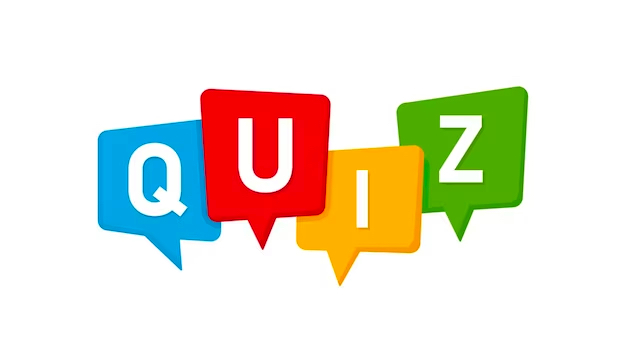
It has been a while since I posted on Coagulation Conversation, but I have a series of posts planned on Factor V Leiden over the next few months. These should help you understand this condition and how it affects you. You may have seen my introductory post about this last year. I have a personal interest in this as it affects my family.
However, to get back into the swing of clotting conversations, I thought it would be helpful to recap with a Quiz.
It’s incredible how quickly you pick up medical jargon once you’re taking anticoagulants. You’ll probably surprise yourself with how many of these key terms you understand.
Score yourself out of ten
- Less than 4 – Coagulation Crisis
- 4 to 6 – Coagulation Competent
- 7+ – Coagulation Conqueror
Let’s get started: Just say what you think the term means, then check if you’re correct by clicking on the link.
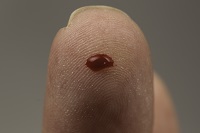 Coagulation is the name for the process the body uses to form a blood clot. This can be a wanted process, where the clot is formed to stop bleeding, such as when you cut yourself or after you’ve had a tooth out. But it can be an unwanted process, where a clot forms in a blood vessel and blocks the blood supply. Blood contains cells called platelets and dissolved proteins called clotting factors. Both these are important in coagulation.
Coagulation is the name for the process the body uses to form a blood clot. This can be a wanted process, where the clot is formed to stop bleeding, such as when you cut yourself or after you’ve had a tooth out. But it can be an unwanted process, where a clot forms in a blood vessel and blocks the blood supply. Blood contains cells called platelets and dissolved proteins called clotting factors. Both these are important in coagulation.
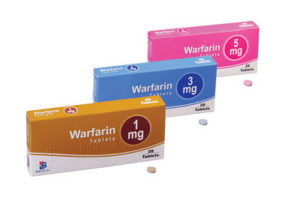 Anticoagulants are medications that make it harder for your body to form a blood clot. This is good as it prevents unwanted clots forming in the vessels, but not so good when it prevents wanted clots from forming after you cut yourself or have surgery. Anticoagulants increase the risk of spontaneous bleeding from your body, such as nose bleeds, gastro-intestinal bleeding and bleeding in the brain.
Anticoagulants are medications that make it harder for your body to form a blood clot. This is good as it prevents unwanted clots forming in the vessels, but not so good when it prevents wanted clots from forming after you cut yourself or have surgery. Anticoagulants increase the risk of spontaneous bleeding from your body, such as nose bleeds, gastro-intestinal bleeding and bleeding in the brain.
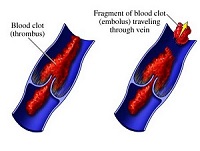
A blood clot that blocks the blood supply of a vessel, but didn’t form in that vessel, instead it came from somewhere else. For example, part of a clot in the atrium of your heart may break away and lodge in a vessel in your brain causing a stroke. To prevent this happening, people with atrial fibrillation take anticoagulants.
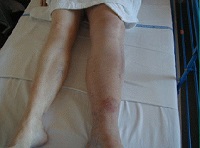 Veins are the blood vessels that carry deoxygenated (blue) blood from your body to your heart. A DVT, deep vein thrombosis, is a blood clot that forms in the deep veins of the leg. The clot stops the blood flowing out of the leg properly and can give you a painful swollen leg. A DVT can be diagnosed by an ultrasound scan of your leg. If you’ve had a DVT, you will need to be on anticoagulants for a while, probably around three to six months.
Veins are the blood vessels that carry deoxygenated (blue) blood from your body to your heart. A DVT, deep vein thrombosis, is a blood clot that forms in the deep veins of the leg. The clot stops the blood flowing out of the leg properly and can give you a painful swollen leg. A DVT can be diagnosed by an ultrasound scan of your leg. If you’ve had a DVT, you will need to be on anticoagulants for a while, probably around three to six months.
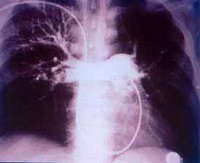 Pulmonary means something to do with the lungs. So a pulmonary embolus, PE, is a blood clot in the lungs. It occurs when part of a blood clot somewhere else in the body breaks off and travels to the lungs. The embolus could come from a deep vein thrombosis, DVT, in the leg or the pelvis. The floating piece of clot blocks the blood supply to the lungs. A small pulmonary embolus may not cause any symptoms, but a large one can cause breathing difficulties, fainting spells and can even be fatal. Often people have shortness of breath and chest pain. These can come on quite suddenly. The chest pain is often described as a stabbing pain like a knife and is worse on taking a deep breath. The pain is caused by inflammation of the pleura, the membrane covering the lungs, so is called pleuritic pain. Some people have an irritating cough and may cough up a small amount of blood. However, people can have any kind of chest pain or even no pain at all. Everybody who has had a pulmonary embolus will need to take anticoagulants for a minimum of three months and probably around six months.
Pulmonary means something to do with the lungs. So a pulmonary embolus, PE, is a blood clot in the lungs. It occurs when part of a blood clot somewhere else in the body breaks off and travels to the lungs. The embolus could come from a deep vein thrombosis, DVT, in the leg or the pelvis. The floating piece of clot blocks the blood supply to the lungs. A small pulmonary embolus may not cause any symptoms, but a large one can cause breathing difficulties, fainting spells and can even be fatal. Often people have shortness of breath and chest pain. These can come on quite suddenly. The chest pain is often described as a stabbing pain like a knife and is worse on taking a deep breath. The pain is caused by inflammation of the pleura, the membrane covering the lungs, so is called pleuritic pain. Some people have an irritating cough and may cough up a small amount of blood. However, people can have any kind of chest pain or even no pain at all. Everybody who has had a pulmonary embolus will need to take anticoagulants for a minimum of three months and probably around six months.
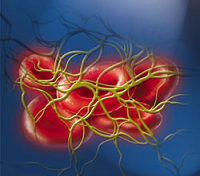 VTE, venous thrombo-embolic disease means any clot within your veins (including the pulmonary vessels of your lungs) whether it formed there or came from somewhere else. The term VTE is often used in medical articles as a single term to cover both pulmonary embolus, PE and deep vein thrombosis, DVT.
VTE, venous thrombo-embolic disease means any clot within your veins (including the pulmonary vessels of your lungs) whether it formed there or came from somewhere else. The term VTE is often used in medical articles as a single term to cover both pulmonary embolus, PE and deep vein thrombosis, DVT.
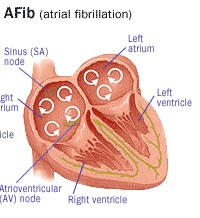 AF is a disorder of heart rhythm. In a normal beat, the atria in the upper part of the heart contract first. Each time the atria contract they send an electrical impulse to the ventricles, the lower chambers of the heart, leading to a regular heart beat. In AF, the atria are usually enlarged and floppy, contracting erratically, like a ‘bag of worms’, and are unable to produce a regular electrical signal to activate the ventricles. Instead they produce an irregular signal and the ventricles contract irregularly.
AF is a disorder of heart rhythm. In a normal beat, the atria in the upper part of the heart contract first. Each time the atria contract they send an electrical impulse to the ventricles, the lower chambers of the heart, leading to a regular heart beat. In AF, the atria are usually enlarged and floppy, contracting erratically, like a ‘bag of worms’, and are unable to produce a regular electrical signal to activate the ventricles. Instead they produce an irregular signal and the ventricles contract irregularly.
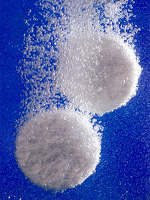 Lysis is the process that takes place within your body to get rid of a clot by dissolving it. Anticoagulants do not usually have any effect on lysis of a clot, instead they prevent the clot from growing bigger or another clot from occurring. If you have had a DVT or PE, it takes a variable amount of time for the clot to disappear (lyse). Sometimes clots do not lyse fully and people can be left with continuing symptoms and a higher risk of another clot occurring.
Lysis is the process that takes place within your body to get rid of a clot by dissolving it. Anticoagulants do not usually have any effect on lysis of a clot, instead they prevent the clot from growing bigger or another clot from occurring. If you have had a DVT or PE, it takes a variable amount of time for the clot to disappear (lyse). Sometimes clots do not lyse fully and people can be left with continuing symptoms and a higher risk of another clot occurring.
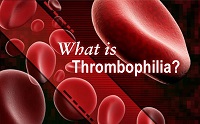 Thrombophilia does not mean someone like Paul who is passionate about coagulation, even though literally, “ thrombo” means clot and “philia” means “love of”. Instead it refers to an inherited clotting disorder due to a problem with a particular protein in the blood. Common thrombophilas are Factor V Leiden and prothrombin mutations.
Thrombophilia does not mean someone like Paul who is passionate about coagulation, even though literally, “ thrombo” means clot and “philia” means “love of”. Instead it refers to an inherited clotting disorder due to a problem with a particular protein in the blood. Common thrombophilas are Factor V Leiden and prothrombin mutations.
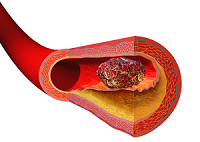

Was so good to see a coagulationconversation email in my box this morning, have been missing them. they are such a help, so informative and such interesting articles, like today’s one …no, I don’t think I’d like the derivative from the whale poo on my forehead, lol. Following a PE, I am on warfarin for life, initially thought I only be on for 6 months. Thank you.